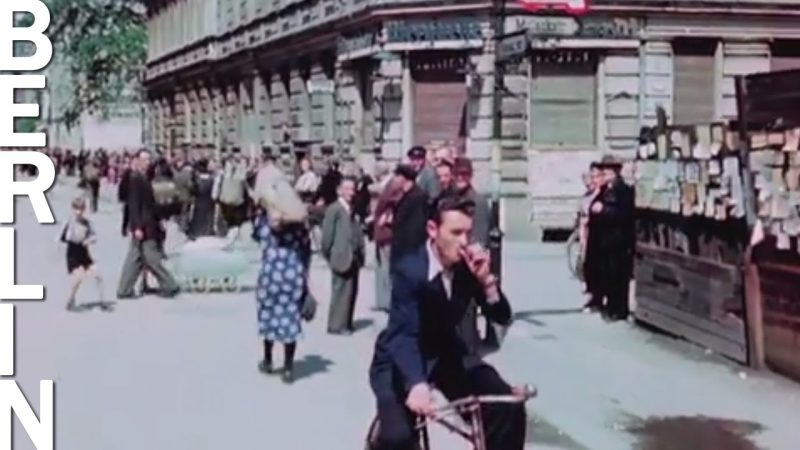Can you imagine the aftermath in Berlin, right after the end of WW2? – Well, thanks to the Kornos Media, historical-documentary-focused production company from Hamburg, we can actually see the devastated city in color.
This super rare footage of Berlin is not colorized and it had been shot by it by U.S. Air Force military cameramen on Kodachrome color film.
It’s almost surreal to see how war can destroy a city deep in its core. Take a look at this rare footage of Berlin right after the end of the war.
According to Grigoriy Krivosheev’s work based on declassified archival data, Soviet forces sustained 81,116 dead for the entire operation, which included the battles of Seelow Heights and the Halbe; Another 280,251 were reported wounded or sick during the operational period. The operation also cost the Soviets about 2,000 armoured vehicles, though the number of irrevocable losses (write-offs) is not known. Initial Soviet estimates based on kill claims placed German losses at 458,080 killed and 479,298 captured, but German research puts the number of dead at approximately 92,000 – 100,000. The number of civilian casualties is unknown, but 125,000 are estimated to have perished during the entire operation.
In those areas which the Soviets had captured and before the fighting in the centre of the city had stopped, the Soviet authorities took measures to start restoring essential services.Almost all transport in and out of the city had been rendered inoperative, and bombed-out sewers had contaminated the city’s water supplies.The Soviets appointed local Germans to head each city block, and organized the cleaning-up.Further, the Red Army made a major effort to feed the residents of the city. Most Germans, both soldiers and civilians, were grateful to receive food issued at Red Army soup kitchens which began on Colonel-General Nikolai Berzarin’s orders. After the capitulation the Soviets went house to house, arresting and imprisoning anyone in a uniform including firemen and railway-men.
During, and in the days immediately following the assault,in many areas of the city, vengeful Soviet troops (often rear echelon units) engaged in mass rape, pillage and murder. Oleg Budnitskii, historian at the Higher School of Economics in Moscow, told a BBC Radio programme that Red Army soldiers were astounded when they reached Germany. “For the first time in their lives, eight million Soviet people came abroad, the Soviet Union was a closed country. All they knew about foreign countries was there was unemployment, starvation and exploitation. And when they came to Europe they saw something very different from Stalinist Russia… especially Germany. They were really furious, they could not understand why being so rich, Germans came to Russia”.
Despite Soviet efforts to supply food and rebuild the city, starvation remained a problem. In June 1945, one month after the surrender, the average Berliner was getting only 64 percent of a 1,240-calorie daily ration. Further, across the city over a million people were without homes.
1,100,000 Soviet personnel who took part in the capture of Berlin from 22 April to 2 May 1945 were awarded with the Medal “For the Capture of Berlin”.
Source: kronos-media.com ,chronos-media.de
